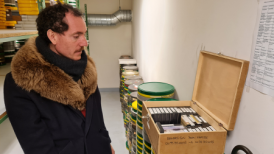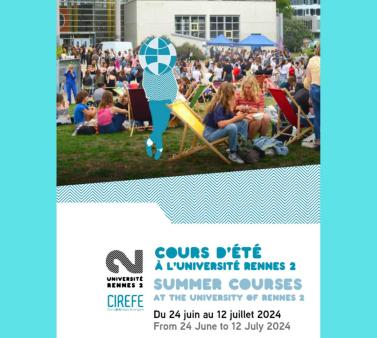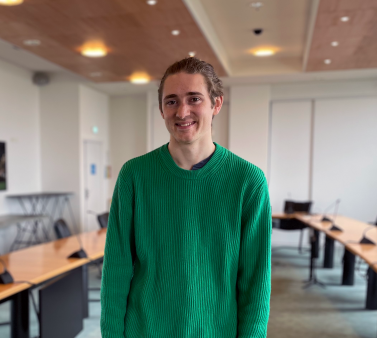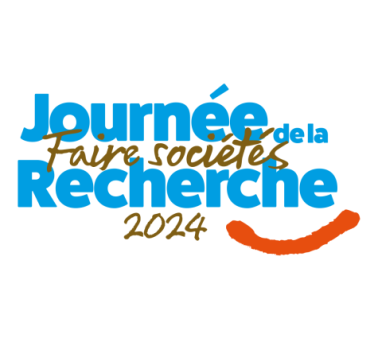
Jean-Baptiste Masson in the reserves of the Cinémathèque de Bretagne in January 2024.
This interview is a shortened version of an interview that appears in French on Rennes 2’s webzine. To read the full original version, please go here.
How did your post-doctoral project come about?
J.B. Masson. During my doctorate in York (United Kingdom), I studied the sound practices of amateurs, the "sound hunters" as they were called, from the origins of sound recording technologies at the end of the 19th century, to the appearance of the cassette in the 1970s, focusing on the tape recorder. It was to show that from the moment there was a possibility to make sound recordings, people seized it and practiced in the private setting. My thesis traces the history of these amateurs. These sound hunters also recorded to sound their images, whether slideshows or films. It was in this way that I met the team of the Cinémathèque de Bretagne, which was precisely initiating the establishment of a sound cell. The connection was therefore made very naturally. I was arriving at that time at the end of my doctorate, and wishing to continue my research, I looked for what the possibilities of post-doctorate could be in Brittany. The Bienvenüe program immediately appeared to be ideal. Rennes 2 University has a beautiful cinema team and I was quickly able to meet Roxane Hamery, a specialist of amateur cinema among other things. The ReSound project emerged from the first three-way meeting we had with Roxane and Gaïd Pitrou, Director of the Cinémathèque de Bretagne.
So you’re writing a manual for the restoration of the sound of amateur cinema. Is this an identified need for cinematheques?
J.B. Masson. For about thirty years, research on amateur cinema has developed, but sound remains the poor relative and very little exists about it. This is reflected in the institutions. Cinematheques have sound collections which are not often put in focus, and very little studied and there is a demand for learning how to use them. How to navigate within the sound collections? How to understand them? How to restore them mechanically and digitally? How to highlight them? The interest of amateur practice is in its historical, anthropological, sociological, cultural and aesthetic value. Amateurs are often people who appear little in history books, but who nevertheless seize technologies as soon as they appear. These are the voices of the field, of everyday life. This manual will be a guide to good practices for understanding and restoring the sound object in amateur cinema. Such a manual does not exist at the moment, so it will be an extremely strong contribution for civil society. It is very applied research in relation to the archive object of cinema. Contact with archivists is constant.
How will you distribute this manual, beyond the Cinémathèque de Bretagne?
J.B. Masson. The Cinémathèque de Bretagne is part of several networks and has participated in the creation of the Diazinteregio network, which brings together 18 cinematheques in France around a database designed in-house and specially adapted to the specificities of amateur cinema. The establishment of a sound cell at the Cinémathèque de Bretagne along with my arrival has favored a greater focus on sound and in particular on sound collections within Diazinteregio, in which I actively participate. After a first seminar in January 2024, I will meet all the members during the spring to examine their sound collections and create an inventory of their needs. The manual must be able to meet all expectations. Amateur practice is characterized by the variety of means used and an often unconventional use of the equipment. That's why it will likely take the form of "good practice guides" rather than "manuals". This last term implies a standardization that does not exist in amateur practice, and this is precisely what gives it its richness. The manual, which will be written in French and English to begin with, will also be distributed within the European network Inédits, where a working group on sound will also be established. The handbook will therefore have a national and European impact, and possibly beyond, thanks to the contacts I'm starting to make.
Can you tell us a little more about the archives held by the Cinémathèque de Bretagne? How old are they?
J.B. Masson. The sound archives are mainly made up of magnetic tapes and cassettes. A direct-engraving disc was also recently discovered in the collections. This is a technology that appeared in the 1930s and was popular with enthusiasts until the 1950s. There are also 8mm, 16mm and 35mm magnetic discs. As I was saying, the sound collections have so far been little explored. A survey is currently underway, in which I'm taking part to assess the collection and diagnose its condition. Part of the sound collections are linked to films, i.e. the soundtracks - dialogue, voice-overs, music, sound effects, rushes, etc. - and others are not. There are some 2,700 sound carriers at the Cinémathèque de Bretagne, dating from the early 1950s to the present day. The direct-engraving disc may be older, but it is not accompanied by any document and bears no date, just the handwritten words "Victor Segalen". As the medium is very fragile, we have not yet processed and listened to it. For the purposes of this manual, we'll confine ourselves to direct-engraving discs, magnetic tapes and cassettes. With these last two media, we have elements that go right up to the 1990s.







